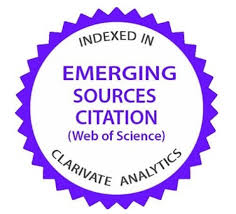The Criminalisation and Imprisonment of Migrant Victims of Trafficking
DOI:
https://doi.org/10.35295/osls.iisl/0000-0000-0000-0924Palabras clave:
cárcel, mujeres, Centro de Lucha contra la Trata del Reino Unido, sistema de justicia penalResumen
Este artículo traza los elementos claves -objetivos, métodos de investigación, hallazgos principales e implicaciones resultantes sobre políticas y prácticas- de la investigación Criminalisation of Migrant Women (criminalización de mujeres migrantes) que realizaron Hales y Gelsthorpe (2012) entre 2010 y 2011 en el Instituto de Criminología de la Universidad de Cambridge. Después, documenta los avances en el Reino Unido desde la publicación de los hallazgos, y las conclusiones que podemos extraer de aquellos en términos de superación de los desafíos que plantea la lucha contra la trata de personas.
Descargas
Metrics
Estadísticas globales ℹ️
|
587
Visualizaciones
|
383
Descargas
|
|
970
Total
|
|
Citas
Anti-Trafficking Monitoring Group, 2014. Modern Slavery, Human Trafficking and Human Exploitation Bill [online]. Available from: http://www.kalayaan.org.uk/documents/ATMG%20Modern%20Slavery,%20Human%20Trafficking%20and%20Human%20Exploitation%20Bill_FINAL%20w%20Intro.pdf [Accessed 5 December 2017].
Aronowitz, A. Theuermann, G., and Tyurykanova, E., 2010. Analysing the Business Model of Trafficking in Human Beings to Better Prevent the Crime [online]. Vienna: OSCE Office of the Special Representative and Co-ordinator for Combatting Trafficking in Human Beings. Available from: http://www.osce.org/secretariat/69028?download=true [Accessed 5 December 2017].
Asylum and Immigration (Treatment of Claimants) Act 2004 (c. 19), Section 2 [online]. Available from: https://www.legislation.gov.uk/ukpga/2004/19/contents [Accessed 5 December 2017].
Blank, J., 2007. Sex trafficking: “a family business”. In: M.W. Karraker, ed., Global Families. Boston, MA: Allyn & Bacon.
Coroners and Justice Act 2009 (c. 25) [online]. Available from: http://www.legislation.gov.uk/ukpga/2009/25/contents [Accessed 5 December 2017], Section 71.
Council of Europe, 2005. Convention on Action against Trafficking in Human Beings. Council of Europe Treaty Series - No. 197 [online]. Warsaw, 16 May. Available from: https://www.coe.int/en/web/conventions/full-list/-/conventions/treaty/197 [Accessed 30 November 2017].
Global Alliance against Traffic in Women, 2010. Beyond Borders: Exploring Links between Trafficking and Gender [online]. GAATW Working Paper Series. Available from: http://www.gaatw.org/publications/WP_on_Gender.pdf [Accessed 5 December 2017].
Group of Experts on Action against Trafficking in Human Beings, 2012. Report concerning the implementation of the Council of Europe Convention on Action against Trafficking in Human Beings by the United Kingdom. First evaluation round [online]. Strasbourg: Council of Europe. Secretariat of the Council of Europe Convention on Action against Trafficking in Human Beings of the Directorate General of Human Rights and Legal Affairs. 12 September. Available from: https://ec.europa.eu/anti-trafficking/sites/antitrafficking/files/greta_report_united_kingdom_2012_en_0.pdf [Accessed 5 December 2017].
Hales, L., and Gelsthorpe, L., 2012. The Criminalisation of Migrant Women. University of Cambridge: Institute of Criminology.
Immigration Act 2014 (c. 22) [online]. Available from: http://www.legislation.gov.uk/ukpga/2014/22/contents/enacted [Accessed 5 December 2017].
L, HVN, THN and T v R [2013] EWCA Crim 991.
Ministry of Justice, 2008. A Strategy for Managing Foreign National Prisoners in the Female Estate. London: Ministry of Justice, Women and Young People’s Group.
Ministry of Justice, 2010a. Offender Management Caseload Statistics 2009. London: Ministry of Justice.
Ministry of Justice, 2010b. Statistics on Women and the Criminal Justice System. Ministry of Justice Publication under Section 95 of the Criminal Justice Act 1991. London: Ministry of Justice.
National Crime Agency, 2014. United Kingdom Human Trafficking Centre National Referral Mechanism Statistics 2013 [online]. 20 January. Available from: http://www.nationalcrimeagency.gov.uk/publications/139-national-referral-mechanism-statistics-2013/file [Accessed 5 December 2017].
Palidda, S., ed., 2011. Racial Criminalization of Migrants in the 21st Century. Farnham: Ashgate.
Sayad, A., 2004. The Suffering of the Immigrant. Cambridge Polity Press.
UK Borders Act 2007 (c. 30) [online]. Available from: https://www.legislation.gov.uk/ukpga/2007/30/contents [Accessed 5 December 2017].
United Nations General Assembly, 2000. Protocol to Prevent, Suppress and Punish Trafficking in Persons, Especially Women and Children, supplementing the United Nations Convention against Transnational Organized Crime [referred to as Palermo Protocol]. UN General Assembly Resolution A/RES/55/25 of 15 November. New York: UN Treaty Series [online], vol. 2237, p. 319. Available from: https://treaties.un.org/doc/publication/mtdsg/volume%20ii/chapter%20xviii/xviii-12-a.en.pdf [Accessed 14 December 2017].
Villacampa, C., and Torres, N., 2014. Trafficked Women in Prison. The Problem of Double Punishment. European Journal on Criminal Policy and Research, 21 (1), 99-115. DOI: https://doi.org/10.1007/s10610-014-9240-z
Webb, S., and Burrows, J., 2009. Organised immigration crime: a post-conviction study. Research Report 15. London: Home Office.
Zimmerman, C., and Watts, C., 2003. WHO Ethical and Safety Recommendations for Interviewing Trafficked Women. Geneva: World Health Organisation.
Descargas
Publicado
Cómo citar
Número
Sección
Licencia
Derechos de autor 2018 Liz Hales

Esta obra está bajo una licencia internacional Creative Commons Atribución-NoComercial-SinDerivadas 4.0.
Los autores conservan el copyright de sus trabajos, que se publicarán en OSLS bajo una licencia Creative Commons Reconocimiento NoComercial SinObraDerivada. Puede consultar más detalles en: http://es.creativecommons.org/licencia/. Si no está de acuerdo con esta licencia, por favor, póngase en contacto con nosotros.
El autor concede los permisos necesarios para difundir la información bibliográfica del artículo, incluyendo el resumen, y autorizar a otros, incluyendo las bases de datos bibliográficas, de índices y servicios de alerta de contenidos, a copiar y comunicar esta información.
Para más información sobre los permisos para distribuir su artículo en cada fase de la producción, por favor, lea nuestra Política de Autoarchivo y Divulgación (en inglés).
Las condiciones de copyright con el nombre de autores y co-autores, y la licencia Creative Commons se mostrarán en el artículo. Estas condiciones se deben aceptar como parte del proceso de envío de un artículo a la revista. Por favor, asegúrese de que todos los co-autores se mencionan correctamente, y que entienden y aceptan estos términos.






















